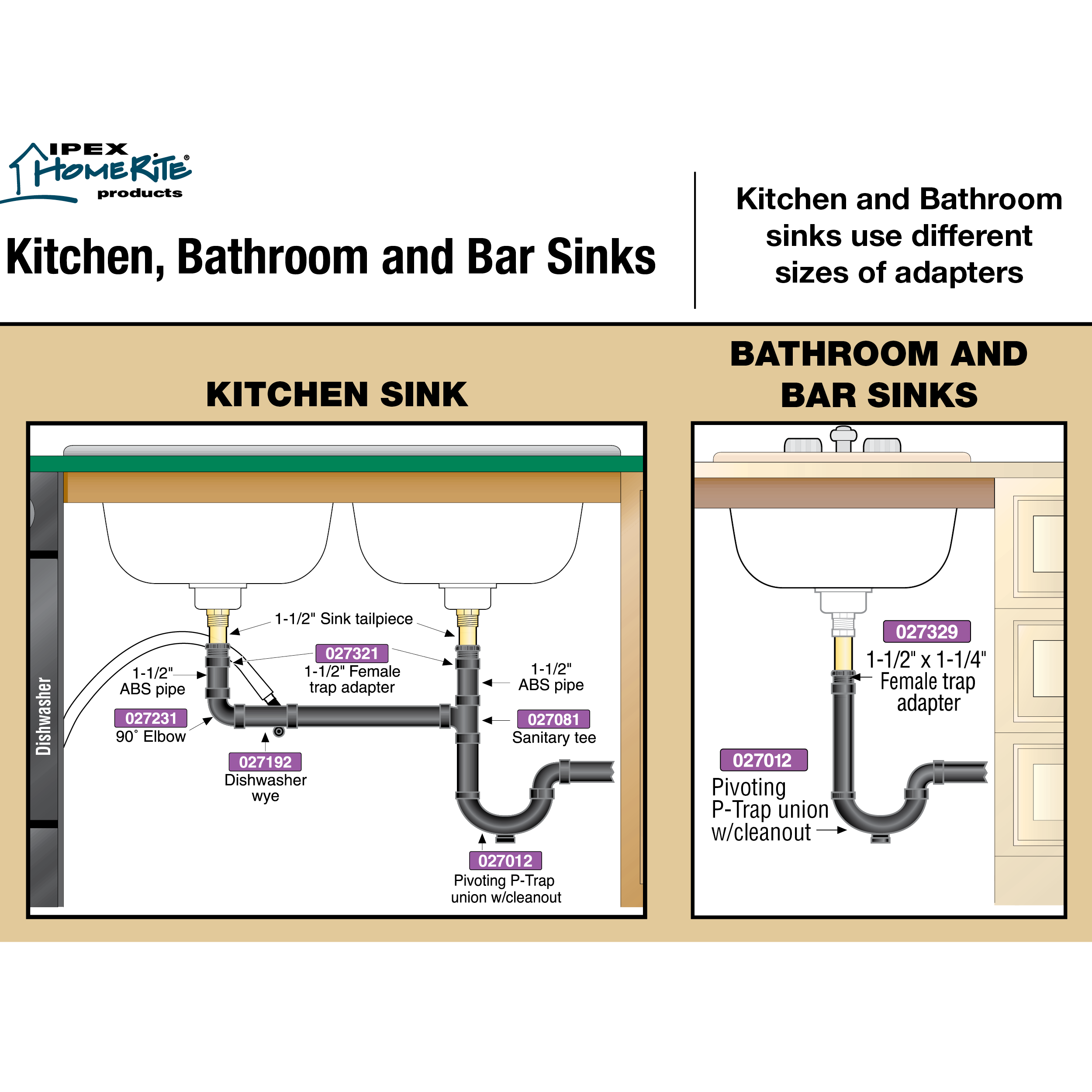Bathroom Double Sink Plumbing Components: Bathroom Double Sink Plumbing Diagram

Bathroom double sink plumbing diagram – Double sink plumbing in bathrooms involves connecting two sinks to a single drain and water supply system. This setup requires specific pipes, fittings, and components to function effectively. Understanding the components and their functions is crucial for proper installation, maintenance, and troubleshooting.
If you’re experiencing slow drainage in your bathroom double sink, it might be time to invest in a reliable drain cleaner. While there are many options available, this comprehensive guide can help you choose the best drano for bathroom sinks.
Armed with the right solution, you can effectively clear clogs and restore smooth water flow to your double sink, ensuring a functional and hygienic bathroom space.
Types of Pipes and Fittings
- Copper Pipes: Durable and corrosion-resistant, copper pipes are commonly used for both hot and cold water lines.
- PEX Pipes: Flexible and easy to install, PEX (cross-linked polyethylene) pipes are becoming increasingly popular for bathroom plumbing.
- CPVC Pipes: Chlorinated polyvinyl chloride (CPVC) pipes are lightweight and resistant to corrosion, making them suitable for hot water lines.
- Fittings: Fittings, such as elbows, tees, and couplings, connect and change the direction of pipes.
Diagram of Double Sink Plumbing System
[Image: Diagram of a double sink plumbing system, labeled with components]
The diagram shows the following components:
- Water Supply Lines: Cold and hot water supply lines connect to the main water supply and provide water to the faucets.
- Sink Drains: Each sink has a drain that collects wastewater and directs it to the drainpipe.
- P-Trap: A U-shaped pipe that prevents sewer gases from entering the bathroom through the drain.
- Drainpipe: Connects the P-traps to the main drain line.
- Vent Pipe: Allows air to circulate in the plumbing system, preventing pressure buildup and drain clogs.
Function of Each Component, Bathroom double sink plumbing diagram
Each component in the double sink plumbing system plays a specific role:
- Water Supply Lines: Deliver water to the faucets at the desired temperature and pressure.
- Sink Drains: Collect and remove wastewater from the sinks.
- P-Trap: Blocks sewer gases and prevents unpleasant odors.
- Drainpipe: Transports wastewater from the sinks to the main drain line.
- Vent Pipe: Equalizes air pressure, preventing slow drains and gurgling sounds.
Common Double Sink Plumbing Issues

Double sinks are a convenient addition to any bathroom, but they can also come with their fair share of plumbing problems. Some of the most common issues include:
– Clogged drains: This is one of the most common problems with double sinks, and it can be caused by a variety of factors, such as hair, soap scum, and toothpaste.
– Leaky faucets: Leaky faucets are another common problem, and they can be caused by worn-out washers or seals.
– Slow draining: Slow draining is often caused by a clogged drain, but it can also be caused by a problem with the P-trap.
– Water hammer: Water hammer is a banging noise that can occur when water is turned on or off. It is caused by the sudden change in water pressure.
Double Sink Plumbing Installation

Installing a double sink plumbing system involves several steps, including planning, gathering materials, and following a step-by-step process.
Materials Required
The materials required for installing a double sink plumbing system include:
- Two sinks
- Two faucets
- Two drain assemblies
- P-traps
- Supply lines
- Shut-off valves
- Caulk
- Tools
Tools Required
The tools required for installing a double sink plumbing system include:
- Wrench
- Pliers
- Screwdriver
- Level
- Caulk gun
Installation Steps
The steps involved in installing a double sink plumbing system include:
- Turn off the water supply to the sink.
- Disconnect the old sink and faucet.
- Install the new sink and faucet.
- Connect the P-traps to the drains.
- Connect the supply lines to the faucets.
- Turn on the water supply and check for leaks.
When planning a bathroom remodel, understanding the plumbing diagram for a double sink is crucial. It ensures proper water flow and drainage. However, if you’re considering a unique layout, exploring bathroom sink plumbing through floor can be an intriguing option.
This method involves running the plumbing through the floor, creating a cleaner aesthetic and allowing for more design flexibility. By integrating these concepts, you can create a functional and visually appealing bathroom space that meets your specific needs and preferences.